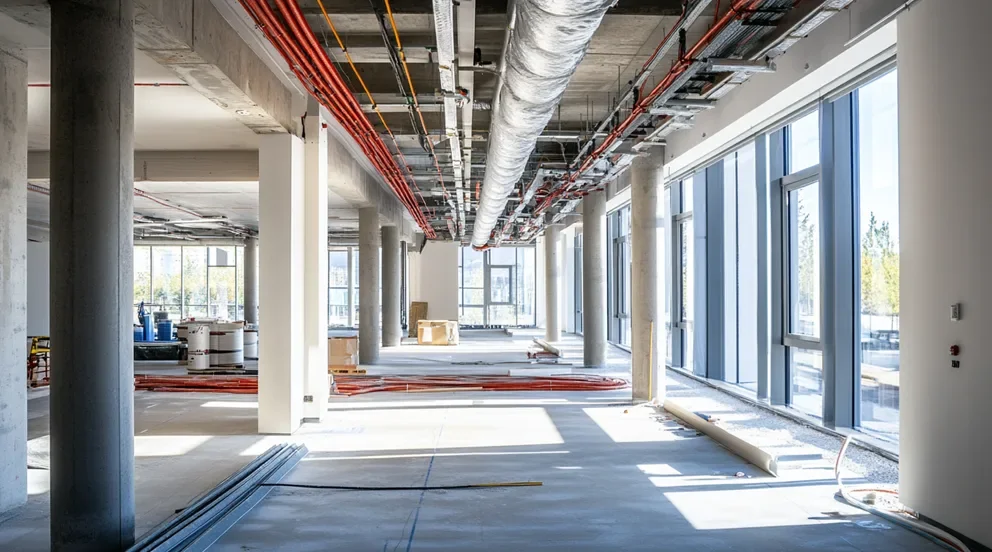Procurement software construction refers to the process involved in creating digital platforms and tools designed to automate and manage the procurement process efficiently. This includes developing software applications that facilitate the activities related to purchasing goods and services. The primary aim is to streamline procurement tasks, reduce manual errors, and increase the efficiency of procurement operations.
The software developed under procurement software construction offers various functionalities such as supplier management, purchase order management, contract management, spend analysis, and e-procurement. By integrating these functionalities, procurement software helps organizations maintain transparency, control spending, and improve supplier relationships. Consequently, businesses are able to make informed purchasing decisions, optimize their procurement process, and achieve cost savings.
Furthermore, procurement software construction is characterized by the adoption of cutting-edge technologies such as Artificial Intelligence (AI), machine learning, and blockchain. These technologies enhance the capabilities of procurement software by automating complex procurement processes, enabling predictive analytics for spending and suppliers, and ensuring secure transactions. As a result, procurement software becomes not just a tool for operational efficiency but also a strategic asset for businesses.
Procurement software construction is a burgeoning field that is gaining traction among businesses striving for operational excellence and strategic advantage. In an era where efficiency and cost-effectiveness are paramount, procurement software becomes an indispensable tool. This introduction aims to unravel the multifaceted nature of procurement software construction, elucidating its significance and the transformative impact it brings to the procurement process.
The construction of procurement software entails meticulous planning, design, and deployment, with a focus on addressing the specific procurement needs of an organization. Developers and IT experts collaborate closely, applying agile methodologies and leveraging advanced technologies to create robust, user-friendly procurement solutions. This collaborative effort is instrumental in ensuring that the software not only automates procurement tasks but also provides strategic insights to drive better business outcomes.
As we delve deeper into the intricacies of procurement software construction, we uncover the challenges and opportunities that lie within. From navigating the complexities of software development to integrating emerging technologies, this exploration sheds light on how businesses can harness the power of procurement software to streamline processes, enhance transparency, and achieve scalability. The journey through procurement software construction is a testament to the innovative approaches that are reshaping the procurement landscape, offering a glimpse into the future of efficient and effective procurement practices.
Evaluating the Benefits of Integrating Procurement Software into Construction Management
In the evolving landscape of construction management, there’s a growing emphasis on efficiency and cost-effectiveness. Here, the integration of procurement software emerges as a key facilitator. Notably, this technology streamlines the procurement process. This simplification leads to immediate cost reductions. Additionally, it ensures that materials and services are acquired at the best possible price. Moreover, by automating tasks that were traditionally manual, the software drastically cuts down on time spent on procurement activities.
Furthermore, the precision of procurement software in tracking expenses and budget adherence is unparalleled. Consequently, project managers gain better control over financials. This control is crucial for staying within budget and maximizing profitability. Equally important, the software enhances communication between all stakeholders involved in the procurement process. As such, it reduces the likelihood of errors and misconceptions. Also, the ability to seamlessly share information improves collaboration and decision-making.
Another significant benefit is the software’s capacity for data analysis. By leveraging this feature, construction managers can identify purchasing trends and supplier performance. This insight allows for more strategic procurement decisions in the future. For instance, managers can negotiate better terms with suppliers or adjust their sourcing strategies to optimize costs and quality.
Moreover, the integration of procurement software into construction management supports regulatory compliance. With its detailed record-keeping capabilities, the software simplifies the audit process. Consequently, it ensures that all procurement activities are transparent and comply with industry standards and government regulations.
Ultimately, the integration of procurement software into construction management offers numerous benefits. These include cost savings, time efficiency, improved financial control, enhanced communication, strategic decision-making support, and compliance facilitation. As the construction industry continues to embrace digital transformation, the role of procurement software becomes increasingly central. It not only optimizes procurement processes but also contributes significantly to the successful delivery of construction projects.
Understanding the Role of Procurement Software in Enhancing Supply Chain Efficiency in Construction
In the complex ecosystem of construction projects, efficiency in the supply chain plays a pivotal role in determining both the timeline and budget of a project. Here, procurement software emerges as a crucial tool for enhancing this efficiency. By automating the procurement process, it not only streamlines operations but also significantly reduces the likelihood of errors. Additionally, it provides real-time data analytics, enabling better decision-making.
Firstly, procurement software facilitates the seamless sourcing of materials. It quickly compares suppliers, prices, and delivery times. This capability ensures that the best deals are secured, contributing to cost savings. Furthermore, by centralizing purchasing data, it nurtures more strategic vendor relationships. Consequently, it brings about improvements in material quality and delivery reliability.
Moreover, the software significantly enhances inventory management. It meticulously tracks inventory levels, reducing instances of overstocking or stockouts. Remarkably, this leads to optimal inventory levels that align with project timelines, ensuring materials are available when needed. As a result, project delays are minimized, maintaining the momentum of construction activities.
Another tremendous advantage is the improvement in workflow coordination among different project stakeholders. By offering a unified platform for communication and data sharing, the software eliminates silos within the project teams. Subsequently, it fosters a collaborative environment that enhances the overall productivity of the construction project.
Lastly, compliance and risk management benefit greatly from the adoption of procurement software. With its ability to monitor compliance with both internal policies and external regulations, the software mitigates the risks associated with non-compliance. Additionally, it enhances the transparency of the procurement process, further safeguarding the project against potential financial and legal issues.
In summary, procurement software is indispensable for enhancing supply chain efficiency in construction. Through automation and real-time analytics, it enables better sourcing, inventory management, and collaboration. Furthermore, it plays a critical role in compliance and risk management, safeguarding the project from various challenges. Thus, its adoption significantly contributes to the successful and efficient completion of construction projects.
Key Features to Look for in Procurement Software for the Construction Industry
Selecting the right procurement software is paramount for construction industry professionals. The construction sector demands unique considerations, given its complex supply chains and the critical nature of timely materials delivery. Consequently, several key features should be at the forefront during the selection process. Firstly, integration capabilities stand out. The software must seamlessly integrate with existing project management and accounting systems. This facilitates real-time data exchange, enhancing decision-making processes.
Secondly, user-friendliness cannot be overlooked. A steep learning curve can hinder adoption rates among team members. Therefore, it is crucial that the interface is intuitive. Moreover, customizable workflows are a must. They allow businesses to tailor the software’s operations to align with specific project needs. This flexibility can significantly improve efficiency and reduce errors.
Inventory management features also play a critical role. They ensure that materials are available when needed, preventing costly project delays. Additionally, these features allow for real-time tracking of stock levels, enabling proactive reordering and adjustments. Equally important is mobile accessibility. Given the dynamic nature of construction sites, having the ability to manage procurement processes on the go is invaluable. It ensures that project managers can make timely decisions, regardless of their location.
Vendor management functionality is another essential aspect. This feature simplifies the supplier selection process and helps in maintaining strong relationships with reliable vendors. Moreover, it assists in evaluating supplier performance, ensuring that only the most dependable are chosen for future projects. Lastly, reporting and analytics tools are indispensable. They provide insights into spending patterns and efficiency, highlighting areas for improvement.
In summary, when selecting procurement software for the construction industry, it is vital to consider integration capabilities, user-friendliness, customizable workflows, inventory management, mobile accessibility, vendor management functionality, and robust reporting tools. These features collectively ensure that the selected software can meet the unique demands of the construction sector, ultimately contributing to smoother project execution and enhanced profitability.
Overcoming Common Challenges in Construction Procurement through Software Solutions
The construction industry faces myriad challenges, especially in procurement. These hurdles range from maintaining cost control and managing supply chain complexities to ensuring compliance and managing documentation. Fortunately, software solutions have emerged as a powerful tool to overcome these obstacles, significantly streamlining the procurement process.
Firstly, cost control is a vital aspect of construction procurement. Budget overruns can severely impact project timelines and overall profitability. Software solutions now provide real-time budget tracking and forecasting tools. This allows project managers to make informed decisions, avoiding unnecessary expenditures and keeping costs within the predefined limits. Furthermore, these platforms facilitate the comparison of supplier bids, ensuring that the best value for money is achieved.
Secondly, managing the supply chain poses another significant challenge. The construction industry relies on a complex network of suppliers and subcontractors. Delays or failures in the supply chain can have cascading effects on the project timeline and costs. Software solutions help by offering detailed tracking of materials and equipment. These systems ensure timely delivery and coordination, thereby minimizing delays and optimizing productivity.
Additionally, ensuring compliance with regulations and standards is crucial. Non-compliance can lead to hefty fines and project delays. Compliance management software automates the tracking of regulatory changes. It ensures that procurement activities adhere to the latest standards, mitigating the risk of non-compliance.
Managing documentation efficiently is another critical aspect. The procurement process involves a significant amount of paperwork, from contracts to purchase orders and invoices. Software solutions simplify this by digitizing documents and storing them in a centralized database. This not only improves accessibility but also enhances documentation accuracy and reduces the risk of errors.
In conclusion, software solutions offer a comprehensive approach to tackling the common challenges in construction procurement. By leveraging these tools, companies can enhance efficiency, ensure compliance, manage costs, and maintain a smooth supply chain, ultimately contributing to the success and profitability of construction projects.
Future Trends in Construction Procurement Software and Impact on Project Delivery
In the rapidly evolving construction industry, procurement software is undergoing significant transformations. These advancements aim to streamline processes, enhance efficiency, and ultimately improve project delivery outcomes. A growing trend is the integration of artificial intelligence (AI) and machine learning (ML) capabilities. Consequently, procurement systems are becoming more intuitive. They can now predict project needs, automate ordering, and optimize supply chain logistics.
Another notable trend is the increased focus on cloud-based solutions. This shift ensures that stakeholders have real-time access to procurement data from any location. Therefore, decision-making is more informed and collaboration between parties improves. Additionally, cloud platforms facilitate easier updates and enhancements to the software. Thus, users always have access to the latest features without the need for time-consuming manual upgrades.
Moreover, sustainability has become a priority in construction procurement. Modern software now includes features that help project managers select eco-friendly materials and suppliers. This focus not only addresses environmental concerns but also meets the growing demand for green building practices. It positions companies as responsible corporate citizens in the eyes of clients and regulators.
Furthermore, the integration of blockchain technology is starting to make waves. It offers unmatched security and transparency for transactions. This development is particularly beneficial in managing contracts and handling payments, areas often prone to disputes and fraud. As blockchain technology matures, its adoption in procurement software is expected to increase, safeguarding the integrity of procurement processes.
Lastly, mobile compatibility has become a standard expectation. Field personnel can access procurement platforms via smartphones or tablets. This flexibility ensures that project sites remain connected to the supply chain, facilitating immediate updates and adjustments.
These trends underscore a move towards more intelligent, efficient, and sustainable construction procurement practices. As software becomes more sophisticated, projects are delivered more effectively, on time, and within budget, setting a new standard in the construction industry.



